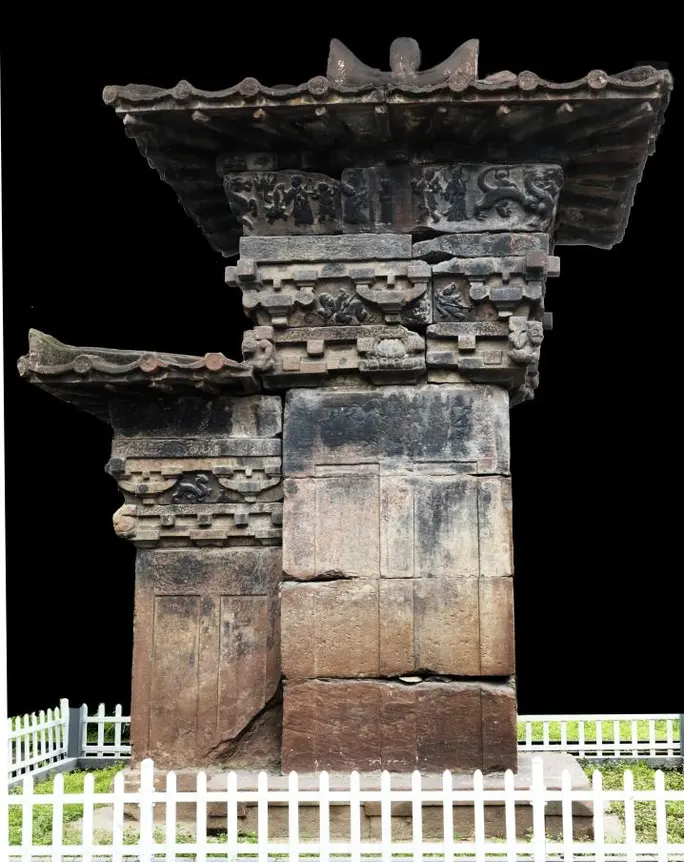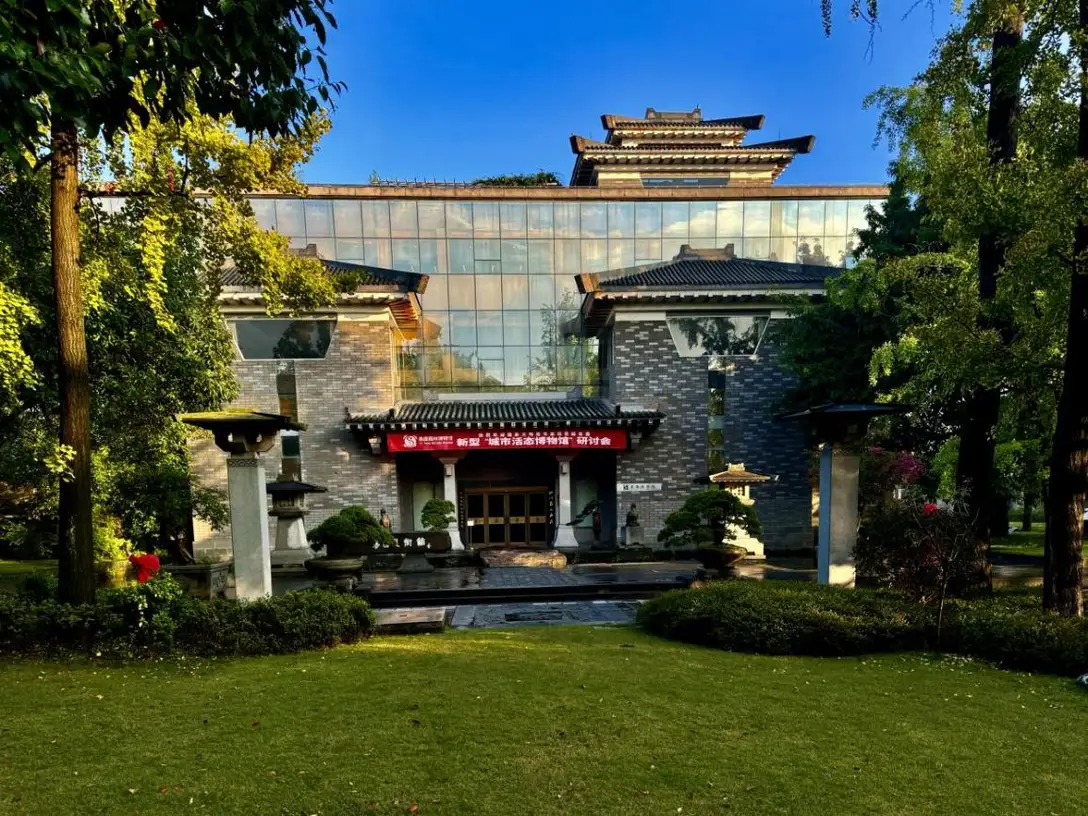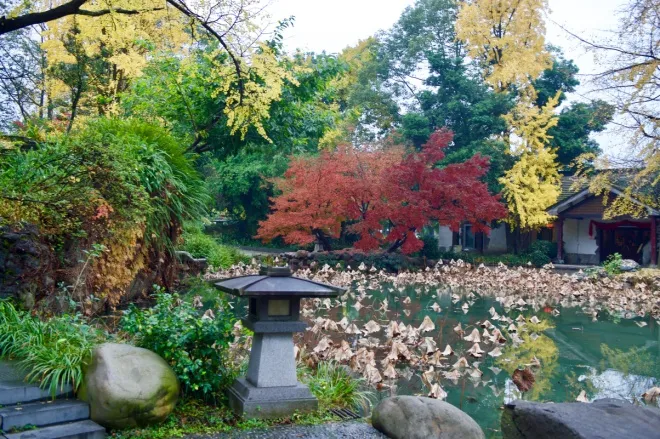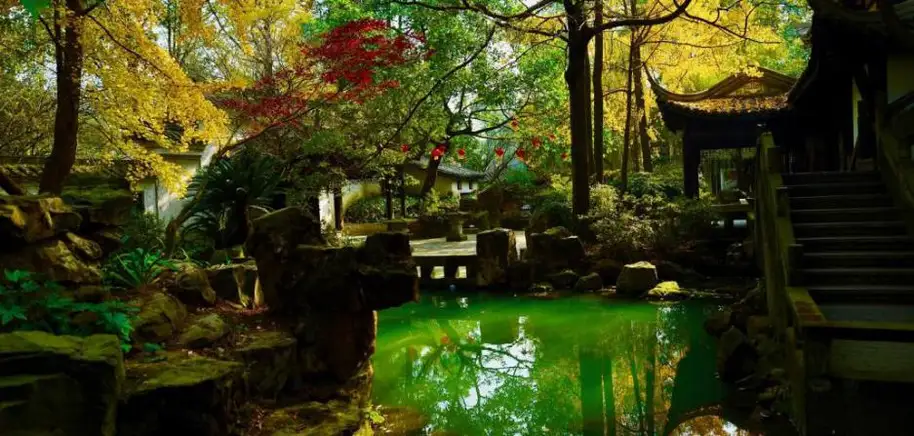Chuan School Garden Art Museum (Garden Museum Creation)
Chuan School Garden Art Museum (Garden Museum Creation)
I. Six Factors for the Achievement of Easy Park
Yi Park can constitute six theme venues, three major heritage as one of the Tianfu Culture and Arts Expo Park, enjoying the reputation of the Western Grand View Garden. In addition to the resource endowment of six thematic venues, bringing together tangible cultural heritage, intangible cultural heritage, natural heritage in one of the comprehensive resources, but also with the city in which it is located, the region to which it belongs, the innate advantages of land resources, as well as cultural and artistic precipitation, create the concept of persistent persistence and hard work are inextricably linked.
1. Timing and location: It is located in the Tianfu Art Park, which is adjacent to and connected with the Jinniu State Guesthouse, and is in the core of the 3,000-acre Tianfu Art Park in the Jinniu State Guesthouse area. It is located in the core range of Tianfu Art Park of 3,000 mu in the area of Jinniu State Guesthouse, adjacent to and connected with Jinniu State Guesthouse. It is an urban living museum located in the main urban area of the metropolis, the Tianfu Art Park area, the State Guesthouse Reserve, and the ancient Shu Jinniu Dam Historical and Cultural Heritage Area, among other inherent advantages.
2. Culmination and accumulation:The founder will be collected one by one since the reform and opening up of the calligraphy and painting bonsai, famous trees and stones, ancient trees in the Three Gorges Migrant Area, cultural relics and ancient buildings, Ming and Qing dynasty furniture and other cultural artifacts that have accumulated over the past 50 years, and then after nearly 40 years of creation.
3. Inheritance and innovation:In 1995, it was built into a garden with the innovative concept of bearing the Chinese culture and creating the classics of the times plus the Yi reasoning, and was approved by the Sichuan Provincial Cultural Relics Bureau as the Sichuan Yi Garden Museum of Landscape Art in 2002, and recognized as the first traditional new garden of Xinhua style by Luo Zhewen in 2004, and approved by the State Administration of Cultural Heritage as the national third-grade museum of landscape art in 2012, and recognized as the first city of living museum in China by the State Administration of Cultural Heritage, Zhang Bo, in 2024. Living Museum. Jinniu Dam is recognized by scholars of literature and history of Ba Shu as the Ancestral Memory and Cultural Landmark of the ancient Shu Jinniu Road.
4. Financial support and construction and operation.
5. Craftsmanship and perseverance.
Second, the cultural intention of the Yi Yuan Garden
The gardening concept of Yi Garden originates from the I Ching, which is the first of all Chinese classics, and the philosophical thought of Zhou Yi and the concept of "unity of heaven and mankind" can best reflect the thinking mode and worldview of Chinese people. Chinese gardening theorist Zhang Jiaji said: Zhouyi is the highest peak of the development of pre-Qin philosophical thought, which had a profound influence on the thinking of ancient society and the field of culture and art. Therefore, ancient and modern philosophers regarded "Yi" as the origin of Chinese culture, and therefore, thinkers and artists of all times looked for the law of art creation from the I Ching, and this work of the I Ching gained an authoritative position in the field of art, which also showed its important position in Chinese philosophy and aesthetics. Prof. Ai Dingzeng, a great master of Chinese gardening theory, said, "If you don't know Chinese philosophy, you won't understand Chinese gardening. If you don't know Zhouyi, you can't talk about Chinese philosophy'. To create a garden with Yi theory is to use the philosophical aesthetics of 'using the small as a metaphor for the big, totaling the many with the small, from this to the other, from near to far, hiding as revealing, and hiding as revealing' as the guiding ideology and the gardening method to carry out the whole process. "The 'Yi' is a philosophical aesthetic, which is guided by the philosophy of 'hiding as revealing, concealing as revealing'. The 'Yi' is based on the use of symbols and images, and does not call them by their names or say what they are about. As the saying goes, "A book can't fulfill its words, and words can't fulfill their meanings", so the Yi design uses imagery to fulfill its meanings.
III. Chinese Gardens and Chinese Poetry, Calligraphy and Painting
Chinese garden is a poetic and picturesque comprehensive artwork, Chinese garden from Zhou Chen said: Chinese garden is a concentrated carrier of Chinese philosophy and culture, is the unity of man and nature in accordance with the poem of praise, is accessible to the three-dimensional landscape scrolls can be seen and can be traveled and can live. With Chinese poetry, calligraphy and painting of the same origin, each other as a blueprint, drawing on each other, there are "different songs and the same work" of the wonderful. And there is an inseparable marriage relationship, such as the reputation of the South China's gardens and the Wu school of painting is a symbiotic relationship. Even the Wu school of painting directly involved in the creation of the famous garden in Jiangnan, such as the Song Dynasty poet Su Shunqin's Canglang Pavilion. Wen Zhengming in the Ming Dynasty participated in the Humble Administrator's Garden, Shi Tao built the Katashi Mountain House and so on.
Both Chinese gardens and Chinese landscape paintings use the "Three Distant Methods" (high, flat and deep) to express the spirit of natural landscapes. The difference is that landscape painting uses brush and ink on specific rice paper to follow the natural expression of the charm of real mountains and real water. The Chinese garden landscape has the natural living elements and materials of real mountains and real water and follows the nature on the natural land to create the spirit of natural landscape, which achieves the realm that although it is made by man, it is like the sky opening up from the sky. Secondly, in addition to the common three-far method of Chinese garden landscape and Chinese painting and calligraphy, it also has the "four-feeling method" of three-dimensional experience, which is "in the visual sense of flowers and willows, auditory sense of rain and lotus, bromine sense of floating fragrance, and feeling of relaxation". Thirdly, the Chinese garden landscape has the functional characteristics of accessible, swimmable and livable. The fourth is, Chinese garden landscape has the characteristics of living and changing.
The Yi Garden is designed as a landscape garden in the style of landscape gardening, with the form and layout of the natural landscape, through stacking the mountains and water, creating a landscape with mountains and water, and a mixture of high and low levels. The stacking of rocks should not only conform to the undulation of natural mountains, the layout of water bodies should also embody the twists and turns of natural water flow, the building adopts a symmetrical and free combination of sparse and dense layout, through the winding paths and secluded, separated but not plugged and other techniques, to achieve a high, flat and far-reaching three-dimensional landscape space with rich and varied levels, not only to realize the visual endlessness of step by step landscape, but also the endlessness of the living spatial context.
IV. Spatial layout of "unity of heaven and mankind"
Yi Garden to the I Ching innate eight trigrams Qian, Kun, Li, Kan covered by the sky, earth, sun, moon and east, west, south, north, combined with gold, wood, water, fire, earth five elements of culture, positioning Yi Garden's four gates and five districts.
- Yi Garden South Gate, Thick and Virtuous-Kunde Garden; "Ancient Jinniu Dam" Park.
- North Gate of Yi Garden, (Qianjian Shangyang) Upper Balcony; Tianfu Art Center; Sichuan School Bonsai Expo Area.
- East Gate of Yi Garden, Water and Moon Gate; "Jin Sheng Li Shui"; Li Shui Garden; "Chuan Yuan Zi" Appreciation Area.
- West Gate of Yi Garden, away from fire; "Maple Bloom Xiahui Gate; Dao Sheng Tang "Yi Garden Art Museum".
- The Garden of Shu, Sichuan Opera Art Museum Experience Area.
With the concept of "heaven and man in harmony" and "heaven and man inducting", it builds up a space pattern of garden within a garden, courtyard within a courtyard, and a courtyard in front and back, and builds up a pleasant space of heat preservation, coolness, and sun bathing with the method of yin, yang, and gray one-room-three-space.
Inheritance and Innovation, Conservation and Utilization" is the true essence of Luo Zhewen's traditional new gardens, and Yiyuan Garden is deeply rooted in his philosophy.
(i) The combination of the best of the best and the best of the best:Yiyuan Garden takes "bearing the Chinese cultural lineage, creating classics of the times" as the goal of inheritance and innovation, and blends the north and south gardens into one, taking the "atmosphere" of the northern gardens, the "literacy" of the southern gardens, and the "immortality" of the Sichuan and Sichuan gardens, to construct the "aura" of Yiyuan Garden. ", Sichuan Sichuan garden of "fairy gas", the construction of the Yi Garden garden of "aura". Sichuan Sichuan immortal gas: one is natural and two is a ghost
(ii) The value concept of scenic and practical, cultural and commercial association:With the five concepts of "compatibility of tradition and era, reflection of humanity and nature, combination of landscape and utility, application of culture and commerce, and regeneration of ecology and environmental protection" as the concept of construction, it inherits and carries forward the cultural and artistic value and economic value of traditional Chinese gardens and realizes the sustainable operation goals of garden for garden and pavilion for pavilion by the concepts of "landscape for garden and pavilion for pavilion" and "utility for humanities and nature". The concept of "landscape and utility, culture and commerce" realizes the sustainable operation goal of "garden for garden, pavilion for pavilion".
(c) The attribute of "heaven and man, everything has its own spirit":
The Yi Garden takes the aesthetics of Yi theory as the concept of creation and cultural soul, and understands the mystery of "induction of heaven and man, the spirit of all things", and injects the architecture of landscape, flowers, trees and stones into the cultural soul so that they can talk with people, and become a "spiritual home of induction of heaven and man, the spirit of all things, and return to nature! ". We advocate the ecological concept of the unity of man and heaven to create a Chinese-style landscape home.
(4)The "Inheritance and Innovation" of Yiyuan Garden: YiyuanThe Expo Park is in theHeritage and InnovationUnder the guidance of the concept, the new Chinese style "Traditional New Garden", which is a blend of tradition and era and advances with the times, was created.
One is the inheritance of the three core elements of classical Chinese architecture:
- Traditional French and Patterns: Chinese Courtyard and Hall Patterns
- Traditional raw materials: wood, stone, clay tiles.
- Traditional crafts: carpentry, stonemasonry, masonry.
The second is an epochal innovation based on the three traditional elements mentioned above:It has created the Han style architectural complex of Yi Garden, which is a rare modern classic Han style architectural complex in China. It became a landmark building on Jinniu Avenue.
Third, from the overall park pattern and cultural positioning, but also reflects the concept of yin and yang and rigid-flexible Idea, the central axis "Shu style Han Yun" hall building reflects the beauty of masculinity, the side of the asymmetrical "Chuan Yuan Zi" landscaped courtyards reflect the beauty of the soft and gentle paths through the secluded.
V. Shu Han Style "Traditional New Garden" Complex
Xinhua Wind Traditional New Garden is the ancient garden cultural heritage of Luo Zhewen, the master of China's ancient gardens. Is his new era of Chinese classical garden architecture "inheritance and innovation, protection and utilization" of professional positioning, but also in the 90s he proposed to the State Administration of Cultural Heritage and the Ministry of Construction to study the important issues. He said: Chinese culture up and down five thousand years, in each era have formed and related to the architectural culture and style, common such as Xi'an Tang style, Kaifeng Song style, Shanxi Yuan style, Beijing, Suzhou and Hangzhou to the Ming and Qing Dynasty for the victory in order to lead the trend. And the Republic of China in just 30 years have formed the Republic of China style architecture. The new China nearly 60 years, more should be formed with Chinese traditional characteristics, but also has the characteristics of the times of the architectural style. It is a major topic he is exploring. And confirmed that "Yi Garden" is the first "new Chinese style traditional new garden" exemplary project, Yi Wenqing is the "new Chinese style traditional new garden" innovator and opener.
The creative inspiration for the Yi Garden Traditional New Garden Han Style Complex came from the ancient Han Que in Ya'an, Sichuan Province. The Ya'an Gao Yi Ancient Han Que is one of the very few beautiful and complete stone structures on the ground of the Han Dynasty in China. With this inspiration, a systematic traditional new garden complex of Shu Han style has been inherited and innovated. Including three large gate towers, a Daosheng Hall Art Museum and the new Han style street, of which the Han stone arch, Han tripod stone tank, Han stone garden lights declared as invention and innovation patents.
The following picture shows the reference diagram between the ancient Han Que and the new gate que of Yi Yuan.

Ya'an Ancient Han Que-Gao Yi Que Front view
|

Side view of Ya'an Ancient Han Que
|

Side elevation of "Dehoumen" Queer Tower, No. 8 Jinquan Road
VI. Allegory of Shuhanmenque
Yi Park Jinquan Road, No. 6, 8 and 10 of the new Xinhua wind traditional new garden Shu Han Gate Que, is based on the Sichuan Ya'an Han Dynasty Shinto stone que Gao Yi Que heritage and innovative concepts to create. With the ancient Shu Han Jinniu Dam historical and cultural interplay, has become a cultural landmark of Jinniu Avenue architectural landscape. This place is located in the southwest orientation, are named according to the orientation to the I Ching trigrams, its Jinquan Road, No. 6, DaYa QianYuanMen, No. 8 for the virtue of "DeHouMen", No. 10, YiLeWuJi "WujiMen". "Yi Le Wuji" means easy and happy, easy and happy for ten thousand years. "YiLeWuji" and "Virtue" means that the Tao is born, the virtue is carried, and the state of YiLeWuji can be reached. It also connotes the philosophy of Zhouyi's "Jiji, Wei Ji" hexagrams that complement each other, showing the law of "cycle, cycle, cycle", that is, the end point of the current thing is the starting point of the next thing. It means that the end of the current thing is the beginning of the next thing, which means: the Tao gives birth to all things, and the virtue is carried in a thousand years, and then you can be happy endlessly".

Side elevation of Yuen Hang Gate Building, No. 8 Jinquan Road

Doorway No. 8, with the wall and Doorway No. 10
New Han Feng Que Lou real picture weathering effect


New Han Feng Building, Daosheng Hall Art Museum


VII. Characteristics of ancient garden compounds
Garden within a Garden" and "Courtyard within a Courtyard" in Yi Garden
Different techniques in showing the beauty of nature, the creation of nature's work in terms of techniques, YiYuan KunHuaYuan and YiYinYuan respectively show different two moods.
[Kunhua Park]
In the garden, there is a giant stone that looks like a leaping fish, which is taken from Zhuang Zi's "Easy Travel", "There is a fish in the northern sea, and its name is Kun. ...... becomes a bird, and its name is Peng." Take the spirit of change. Echoing with the Feng Shui Pagoda in Southeast Kungang, this garden expresses the meaning of far-reaching. And the Yi Yin Garden is to express the meaning of seclusion and profoundness.


Morning Mist in Kunhua Park
[Shoujouen]
The owner of the garden used the phrase "Returning to the field in order to keep the clumsiness" to express the meaning of "Great skill is like clumsiness, and cultivation and study are passed on to the family".

autumn leaves and dilapidated lotus leaves (idiom); fig. at the end of a long period of misery

Half Pavilion Gallery in Kunhua Garden

Mandarin Ducks Pavilion Wind and Rain Corridor
"The Sorrowful Music Center
Spatial characteristics: front court and back yard, a single door and "yin, yang, gray" a room with three spaces, characterized by heat preservation, cool, sun bathing three functions, is a typical traditional courtyard and modern building in western Sichuan.
Architectural features: continuous mandarin ducks room, mandarin ducks roof.
[Ewha-in] (courtyard within a courtyard)
Taken from the meaning of Song Yanshu's "Pear Blossom Courtyard with dissolving moon, Willow Wool Pond with light wind", it is also known as "Pear Garden" because of the theater in Hanfeng Hall in the courtyard.


Deep Garden, Autumn Rhythm of Pear Blossom Garden

Pear Blossom Courtyard

[Sky Light and Cloud Shadow Pavilion]
Take Zhu Xi:
A half-acre square pond opens up.
The light of the sky and the shadows of the clouds wander together.
How clear is the water?
For the sake of having a source of water.


Yiyuan Couple Curved Bridge

Daosangtang Art Museum-Pangu Dashi Bridge

Yi Garden North Gate - North Key Upper Balcony



























